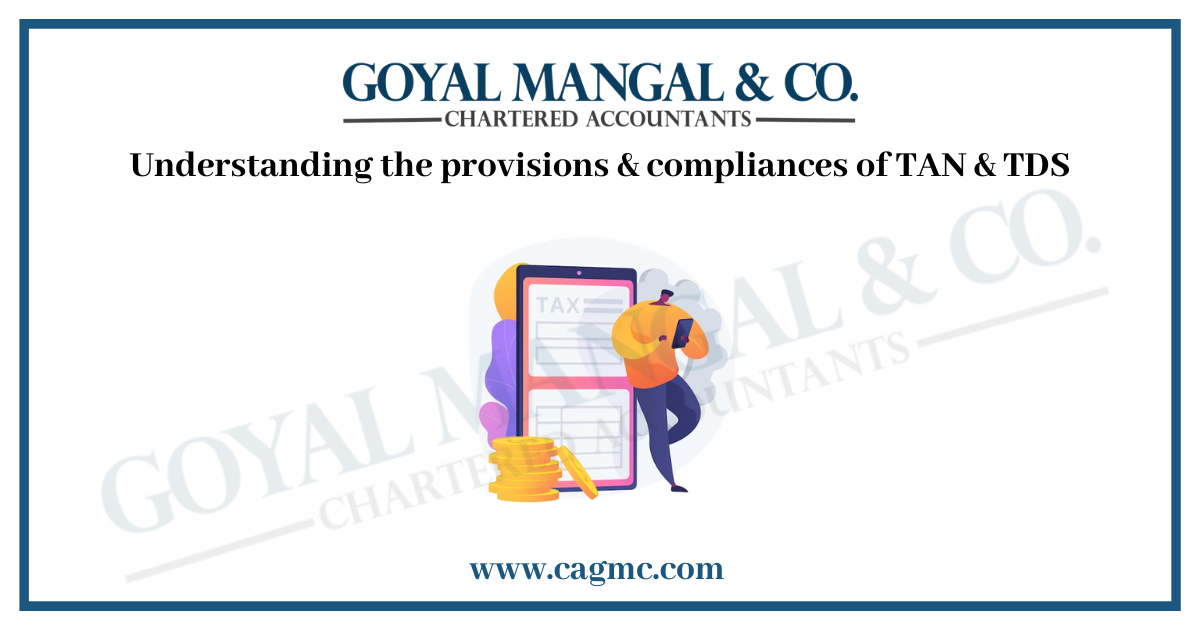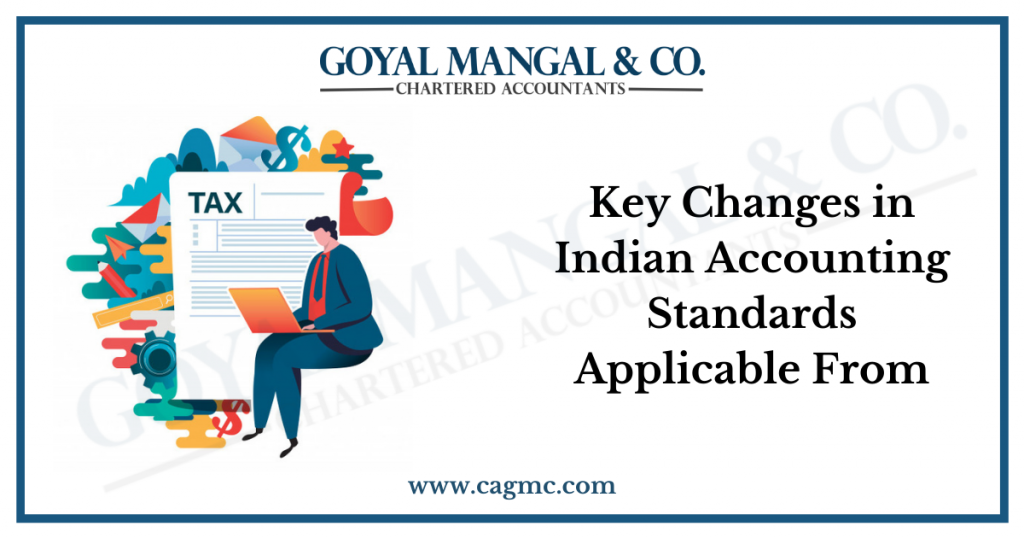
Welcome to our comprehensive blog on the vital aspects of understanding the provisions & compliances of TAN & TDS. This resource-rich guide delves into the essential provisions and compliance requirements associated with TAN provisions, TDS deductions, and timely filing. From understanding the significance of TAN to navigating the intricate world of TDS regulations, this blog equips you with the knowledge needed to ensure seamless adherence to tax obligations and reporting standards. Join us as we demystify TAN and TDS, empowering you with actionable insights for a compliant and hassle-free tax journey.
Meaning of TAN
“TAN” in the context of the Income Tax Act stands for “Tax Deduction and Collection Account Number.” It is a unique alphanumeric code assigned to entities required to deduct or collect tax at the source on a variety of transactions. These entities include employers, businesses, and individuals responsible for deducting taxes from payments made to others, such as employees, contractors, and suppliers, as well as institutions that collect taxes on behalf of the government. TAN is used to identify and monitor tax-deducted or -collected-at-source transactions. It ensures that these
transactions are properly documented and reported to the tax authorities. Entities with a TAN are required to include this number on all tax deduction and collection documents.
In conclusion, (TAN) is a crucial identifier that allows tax authorities to keep track of tax deducted or collected at the source, assuring compliance with tax regulations.
Who is required to apply for a TAN?
According to the relevant provisions of the Income Tax Act, every person liable to deduct tax at source (TDS) or collect tax at source (TCS) must obtain a TAN. In certain instances, PAN numbers can be substituted for TANs. However, only those who are required to deduct tax under specific income tax sections, such as sections 194IA, 194-IB, and 194M, may use PAN instead of TAN. The exception cannot be used by the remaining individuals as an excuse for not obtaining a TAN.
What does a TAN serve, and is it necessary?
TAN number is a unique 10-digit alphanumeric number/code that all tax-deducting or tax-collecting entities are required to obtain. Obtaining a TAN number requires submitting a TAN application. Section 203A of the Income Tax Act, 1961 mandates that the TAN number be included on all TDS statements. In addition, the TAN must be included on all TDS/TCS returns, e-TDS/TCS returns, TDS/TCS payment challans, TDS/TCS certificates, and other documents prescribed by the act.
Suppose the TAN of the deductor or company TAN number is not included in the TDS or TCS documents mentioned previously. In such a scenario, the TIN facilitation centres (TIN-FC) will reject and not accept these returns. In addition, banks do not accept challans for TDS/TCS payments. Section 272BB imposes a penalty of 10,000 for failing to include the TAN in the required documents.
Format of TAN Number
As previously stated, a TAN number is a ten-digit alphanumeric number containing both letters and numbers. The first four numerals consist of capital letters of the alphabet. The fifth through ninth numerals consist entirely of numbers. Once again, the tenth digit is capitalized. For example, a TAN number should appear like PDES03028F.
The following components make up the structure of the TAN:
- Three of the first four letters designate the jurisdiction where the TAN number was issued.
- The fourth letter is the initial of the concerned individual or organization’s name.
- The next five numbers or the numbers in the middle are generated by the system and are unique.
- The final alphabet is also a system-generated special character.
How do you request TAN registration?
Once a person is mandated to obtain a TAN number and include it in TDS/TCS documents, that individual must then register for TAN registration. Two methods are available for obtaining a TAN registration:
- Offline Application: If you selected the offline mode, you must submit a TAN allocation request. This TAN allocation request should be submitted on Form 49B to the nearest TIN Facilitation Centre. On the NSDL-TIN website, you can determine the closest TIN-FCs and PAN centres to your current location.
There are no additional requirements for offline TAN registration. Form 49B, Application for Allocation of TAN, must be completed and submitted. The Form 49B application is available for download from the NSDL website or at TIN Facilitation Centres.
- Online Registration Mode: Thanks to the country’s increasing digital transformation. Anyone can now apply for TAN registration online from any location. The official NSDL website, now known as Protean, offers straightforward TAN registration online. Alternatively, you can obtain a TAN allocation through this NSDL-TIN interface. However, before completing Form 49B, carefully review the instructions for comprehending the online TAN application process.
Online TAN application process
- Visit the NSDL-TIN website online
- Click on “category of deductors” at the bottom of the link’s page.
- Click the ‘select’ icon after selecting the ‘category of deductors’ from the drop-down menu.
- Fill in all the required details, especially the fields marked with this (*) symbol.
- In the event of errors, correct and resubmit the form.
- The confirmation screen with the applicant’s newly entered information will be displayed.
- Now the applicant can modify or validate the information as needed.
- The acknowledgment screen will be displayed on the confirmation screen.
- This acknowledgement includes a unique 14-digit acknowledgment number, vital applicant information, and a space for signature.
- After the successful payment, a disclosure is displayed once more.
- This acknowledgment must be kept and sent to NSDL for the purpose of document submission.
Status of Applicants for a Taxpayer Identification Number
After the offline/online TAN application has been submitted successfully, the application status can be tracked on the NSDL-TIN website. On the website, select the link labelled “Track your TAN application status” to access the application status page. Here, select “TAN – New/Change Request” as the application type and input the acknowledgement number (14-digit acknowledgement number) provided to you previously. Click submit to monitor the status of your TAN application at any time.
Can the TAN data be modified following the TAN Allotment?
After obtaining the TAN allotment and the unique TAN registration number, you need to update or rectify your TAN data or information, such as your phone number, address, etc. You may amend your TAN information on the NSDL-TIN website. The “Apply for Changes or Correction in TAN Data” link is located at the bottom of this page via this link.
Select “category of deductors” and then click the select icon. Change/correct the desired information and input the TAN allocation number as evidence that you have been assigned a TAN.
Multiple TAN
The non-original TAN is the duplicate TAN. Therefore, it is possible for a person who already has a valid TAN to obtain a duplicate TAN by mistake. This situation depicts two TANs for the same individual. However, two TANs are not required for the same individual, as a single TAN or TAN number can be used for all TDS and TCS purposes.
Also illegal is the possession of two TANs by the same individual or entity. In some cases where a single entity has multiple divisions, the company may acquire separate or multiple TANs for each division. In cases of duplicate TANs, the individual should always use the original TAN. Using the “Form for Changes or Correction in TAN” found on the NSDL website, the duplicate TAN should then be returned for cancellation.
Know Your TAN
After obtaining the TAN and TAN registration number, one may wish to review their TAN details. Or, in certain instances, a person may need to recall their TAN and seek TAN information. It is easy to retrieve your TAN details in these instances where you need to search for or know your TAN.
Method for Searching and Knowing Your TAN
- Visit the official website of the Internal Revenue Service, e-Filing
- On the homepage, there are numerous quick connections.
- Select “Know TAN details” from the list of fast links.
- Now, the page titled “Know TAN Details” will appear on your screen.
- Choose ‘Name’ or ‘TAN’ from the “TAN Search” drop-down menu.
- Select the ‘Category of Deductor’ under which the TAN was registered.
- If applicable, enter the ‘Name of Deductor’ or ‘TAN of Deductor’.
- Choose your ‘State’
- Enter the mobile number registered
- Select ‘Continue’
- On the following screen, enter the One-Time Password (OTP) sent to your registered mobile number.
- Now, select ‘Validate.’
Meaning of TDS
TDS stands for “Tax Deducted at Source.” It is a mechanism mandated by the Income Tax Act of a country that requires a person making certain categories of payments to deduct a certain percentage of tax prior to making the payment to the recipient. The tax is then remitted to the government on the recipient’s behalf.
TDS applies to a variety of payment categories, including salaries, interest, rent, professional fees, and commission. The purpose of TDS is to assure consistent tax collection throughout the year and prevent tax evasion. By deducting tax at the time of payment, the government ensures that the beneficiary’s income is taxed at regular intervals, as opposed to relying on the recipient to pay the tax at the end of the fiscal year.
When and by whom should TDS be deducted?
Any person required to deduct TDS at the time of making a specified payment under the Income Tax Act. However, no TDS must be deducted if the payer is an individual or HUF whose accounts are not required to be audited.
For rent payments exceeding Rs 50,000 per month, individuals and HUFs are required to deduct TDS at the rate of 5%, even if they are not subject to a tax audit. Also, such Individuals and HUFs who are subject to a 5% TDS deduction are exempt from submitting a TAN application. Your employer deducts TDS at the applicable income tax bracket rates. Banks deduct 10% TDS. Alternatively, they may deduct 20% if they do not have your PAN.
For most payments, the income tax act specifies the TDS rates, and the payer deducts TDS based on these rates. If you submit investment proof (for claiming deductions) to your employer and your total taxable income is less than the taxable threshold, you are exempt from paying tax. Consequently, no TDS should be withheld from your income.
Similarly, if your total income is below the taxable limit, you can submit Forms 15G and 15H to the bank so that they do not deduct TDS from your interest income. If you were unable to provide substantiation to your employer, or if your employer or bank has already deducted TDS and your total income is below the taxable limit, you can file a return and request a refund of this TDS. The exhaustive list of Specified Payments subject to TDS deduction, along with the applicable TDS rate.
What is the date by which the TDS must be paid to the government?
The Tax Deducted at Source is due to the government by the seventh of the following month.
For example, TDS deducted in June must be paid to the government by July 7th. However, the TDS deducted in March can be deposited until April 30th. The payment deadline for TDS deducted on rent and property purchases is 30 days after the end of the month in which TDS was deducted.
How and when should TDS returns be filed?
Tax Deducted at Source (TDS) returns must be filed by anyone who has deducted TDS. Quarterly TDS returns must be filed with various details including TAN, amount of TDS deducted, form of payment, deductee’s PAN, etc. In addition, various forms are prescribed for filing returns based on the reason for TDS deduction. The following varieties of return forms are available: Form 26QTDS for all disbursements besides wages Q1 – July 31 Q2 – October 31 Q3 – January 31 Q4 – May 31st
| Form No. | Transaction reported in the return | Due Date | ||
| Form 24Q | TDS on Salary | Q1 – 31st July
Q2 – 31st Oct Q3 – 31ST Jan Q4 – 31st May |
||
| Form 27Q | TDS on all payment made to non -resident except salaries | Q1 – 31st July
Q2 – 31st Oct Q3 – 31st Jan Q4 – 31st May |
||
| Form 26QB | TDS on sale of property | 30 days from the end of the month in which TDS is deducted | ||
| Form 26QC | TDS on Rent | 30 days from the end of the month in which TDS is deducted | ||
What constitutes a TDS certificate?
Form 16, Form 16A, Form 16 B, and Form 16 C are all TDS certificates for tax withholding. A person deducting TDS is required to issue TDS certificates to the assessee from whose income TDS was deducted while making payment. For instance, when TDS is deducted from fixed deposit interest, banks issue Form 16A to the depositor. The employer provides Form 16 to the employee.
TDS rebates reported on Form 26AS
It is essential to comprehend the relationship between TDS and your PAN. TDS deductions are attached to both the deductor and the deductee’s PAN. If TDS was deducted from any of your income, you must complete Form 26AS, Tax Credit. This form is a consolidated income tax return accessible to all PAN holders.
Since all TDS is linked to your PAN, this form details the TDS deducted on your income by each deductor for all types of disbursements made to you, including salaries and interest income. This form also includes the income tax you paid directly, either as advance tax or self-assessment tax. In situations where TDS may be applicable to your income, it is crucial that you provide your PAN in the correct format.
How to upload TDS declarations
Follow the instructions below to upload TDS statements to the website of the Income Tax Department:
- Visit the Revenue Tax website. Sign in using your TAN.
- Choose e-File > Income Tax Forms > Federal Complete tax forms on the dashboard.
- Choose the appropriate form and complete the information
- Use either DSC or EVC to verify the return.
Types of TDS
Here are some of the income sources that qualify for TDS:
- Salary
- Payments to Contractor
- Commission payments
- Sale of House
- Insurance Commission
- Interest on securities
- Interest other than interest on securities
- Rent Payment
- Professional fees
- Online Gaming
- Winning from games like a lottery, crossword puzzle, card, etc
SMS notifications for greater transparency
The department of income tax has been sending taxpayers SMS messages from VK-ITDEFL that indicate the amount of tax deducted at source (TDS) against their PAN (Permanent Account Number). Every quarter, the SMS alert will inform you of the TDS credited for your income from salary, interest, etc. The TDS amount would be accrued on your Form 26AS for the corresponding fiscal year.
The Finance Ministry implemented this initiative to increase transparency and reduce instances of TDS mismatches during income tax filing. Taxpayers can compare the information in the SMS with the information on their pay stubs to ensure there is no discrepancy. TDS mismatch may be a prevalent cause of incorrectly filed income tax returns.
Tax Liability when TDS has already been deducted from Income
TDS is deducted from your compensation based on the income tax bracket that applies to you. For all other categories of income, the TDS rates are fixed and range between 10% and 20%. The tax rates are not proportional to one’s total income. In certain instances, you would incur a TDS on your invoices. You would be required to calculate your annual income separately by adding all sources of income
The total taxable income would be used to calculate your actual tax liability. From the calculated taxes, you can deduct the TDS deducted from your various receipts. Subtract the tax deducted at source from your actual tax liability to determine the balance owed to the department of income tax. You may also receive a refund. In either case, you must file a tax return and either pay the tax due or request a refund.
Reasons of Penalty for Noncompliance of TDS Provisions

Summing Up
A firm grasp of TAN and TDS filing is essential for both individuals and entities to uphold tax integrity. Adhering to TDS deduction timelines, accurate documentation, and meticulous reporting not only ensures compliance of TAN & TDS with legal requirements but also contributes to a transparent and accountable financial ecosystem. By staying updated on evolving regulations and cultivating a proactive approach, one can navigate the complexities of TAN and TDS seamlessly. As a critical component of responsible fiscal management, TDS filing plays a pivotal role in sustaining the nation’s revenue cycle.


